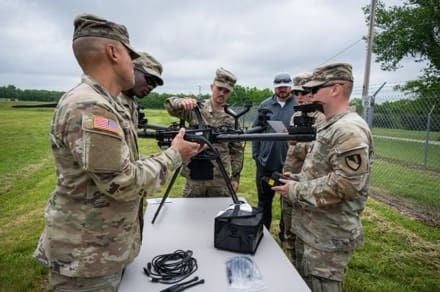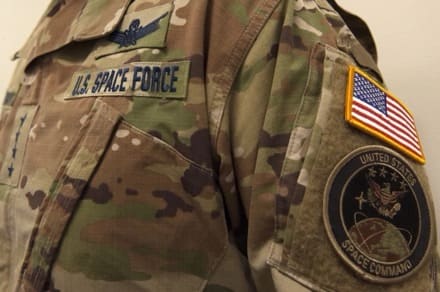The world of firearm optics is evolving at a breakneck pace, driven by advancements in technology and innovative engineering. As each new release grows increasingly complex in their features and benefits, it’s important to keep up to date on the latest trends that are pushing the industry forward.
Today, we’re looking at the most significant trends in firearm optics, from digital advancements and thermal fusion systems to the use of exotic materials and compact designs. No matter whether you’re shooting professionally or just an enthusiast,understanding these trends will help you make informed decisions about your equipment and what you can expect to see in the near future.
Digitally Integrated Rifle Scopes
Digitally integrated optics, such as the Vortex NGSW-FC and Magpul/Maztech X4-FCS, are the bleeding edge for rifle scopes.These devices can integrate real-time data display, ballistic calculators, and enhanced user interfaces to enable greater precision downrange. And although these technologies are still new, it’s fair to say that the concepts and technologies behind them are a good representation of what we can expect to become widespread in the future.
Even though traditional rifle scopes optics have improved a lot over the years, there is a limit to the capabilities one can add to an analog optic. New reticles, improved coatings, and wider magnification ranges can make it easier to range and engage targets, but they don’t really change the procedures behind precision marksmanship.
In contrast, digitally integrated optics have the potential to completely streamline the way a marksman approaches long-range shooting. For example, the recently-selected Vortex NGSW-FC (Next Generation Squad Weapon – Fire Control) system incorporates advanced targeting algorithms and environmental sensors to deliver precise ballistic solutionsdirectly in the image. Similarly, the upcoming Magpul/MaztechX4-FCS plans to offer features like shot tracking, hit detection, and augmented overlays, which significantly improve situational awareness and accuracy.
If these optics can achieve their claimed features, there could be a major shift in how we think about precision marksmanship.
Onboard Fusion Systems for Reflex Sights
The integration of thermal and night vision (NV) capabilities into a single optic system is another game-changer in the field. In the past few years, several optics manufacturers have announced fusion-style optics—usually reflex sights with an onboard sensor for night vision or thermal overlay. You may have already seen this sort of technology showcased by Holosun in their Digital Reflex Sight series, specifically the DRS-NV (Digital Reflex Sight-Night Vision) and DRS-TH (Digital Reflex Sight-Thermal).
Once this technology is fully explored, fusion systems could become a popular alternative to basic reflex sights. An optionaloverlay, whether thermal or night vision, could be a compelling option for defensive carbines, where the user isn’t necessarily going to have helmet-mounted NODs available. These sights are also likely to be more affordable than dedicated night vision or thermal units themselves.
Of course, this technology is still relatively new, and today’sprice point is a bit of a deterrent, but it’s likely that future iterations will be cheaper (and smarter too).
Larger Erector Ratios in Rifle Scopes
The evolution of magnification ratios in rifle scopes has seen significant advancements over the years.
Historically, early scopes offered magnification factors in the range of 3x or 4x, which were considered sufficient for most shooting applications at the time. As lens technology improved and the needs of shooters evolved, manufacturers began to introduce scopes with higher magnification ratios, moving up to 6x and eventually 8x. These higher ratios allowed for greater flexibility, enabling shooters to engage targets at both close and long ranges with a single optic .
Recently, the trend has continued with scopes pushing the boundaries to 10x magnification ratios and beyond. With such a wide range, these scopes can provide a very low magnification for close-quarters agility and a high magnification for long-distance precision. On paper, these benefits appear compelling, especially to those in the military and law enforcement sectors, who require optics that can adapt to various mission profiles.
However, the benefits of larger erector ratios come with certain drawbacks. One of the primary challenges is the increased weight and size of these scopes. As the magnification range expands, the internal components of the scope, such as the lenses and erector assembly, become more complex and heavier. This added optic weight can affect the balance and handling of the firearm, making it less agile and harder to maneuver.
But an even larger consideration is the impact on the exit pupil. Exit pupil is the diameter of the beam of light that exits the eyepiece of the scope and enters the shooter’s eye. Exit pupils contribute exponentially to the size of the usable eyebox, so scopes with thinner exit pupil are considerably stricter when it comes to cheekweld and eye placement.
The two factors that contribute to the exit pupil are the diameter of the objective lens and the magnification of the scope itself. As optics manufacturers push higher magnifications into smaller scopes, the maximum magnification gets harder and harder to use. The result is that many users feel that 1-10x and 1-12x scopes are unforgiving when shooting from dynamic or alternative positions.
Overall, the advancements in magnification ratios in modern rifle scopes provide significant benefits, but they also necessitate a balance between versatility, weight, size, and optical performance. It’s likely we won’t see erector ratios go much higher unless manufacturers begin moving to larger objective lenses to accommodate them.
LPVOs with Diffractive or Fiber Wire Reticles
For years, the market has been pushing for brighter and brighter reticles in low-power variable optics (LPVOs), leading to the development of both diffractive and fiber wire technologies.
In first focal plane optics, diffractive reticle technology is the latest and greatest in illumination. Compared to the current standard of ‘etch-and-fill’ illumination, diffractive reticlesgenerate a significantly brighter image by passing collimated light through an amplitude grating. The result is reticle illumination that can nearly match a red dot in overall brightness. Unfortunately, given the complexity and cost of manufacture, diffractive reticles are usually exclusive to high-end rifle scopes, but it’s likely to become more affordable as manufacturers continue to innovate around it.
A similar level of brightness can be achieved in second focal plane optics with a fiber wire reticle. Unlike diffractive reticles, fiber wire reticles can now be found in even affordable rifle scopes, making it a more accessible option for the average enthusiast. In essence, fiber wire reticles use a laminated fiber optic wire on a conventional crosshair. The tip of the wire is positioned at the center of the crosshair, so when it’s illuminated, your aiming point will appear as bright as a red dot sight.
Until diffractive technology becomes more accessible, fiber wire scopes are likely to continue to grow in popularity, potentially becoming the new standard for second focal plane LPVOs.
Advanced Materials & Manufacturing
Changes in materials and manufacturing methods are also revolutionizing the optics industry, offering significant advantages in terms of weight reduction, durability, and performance.
One of the most notable materials making its way into scope design is titanium. Given its high strength-to-weight ratio and excellent corrosion resistance, titanium is an ideal material for producing lightweight optic components. Moreover, the improved durability of materials like titanium ensures that the optics can endure rough handling and adverse conditions, extending the lifespan of the equipment and maintaining reliable performance over time.
It’s also important to consider how new manufacturing technology is changing the way materials are utilized. As 3D printing becomes more precise, manufacturers will be able tocreate complex parts that were previously impossible or too costly to produce using traditional methods. For example, intricate lattice designs can be printed within the scope’s body to provide structural support while minimizing material use, leading to lighter and more rugged optics .
Compact Prism Scopes
Since the advent of the MicroPrism®, the optics market has seen a surge in the popularity of similarly compact prism scopes with low magnification, typically between 1x and 5x.
These scopes have quickly become a favored alternative to traditional red dot sights, namely due to their etched reticles, which, unlike red dots, are not affected by astigmatism. This makes them an excellent choice for shooters with this common vision issue, as the reticle remains clear and sharp regardless of the user’s eye condition .
At the same time, prism scopes come with the added benefit of battery independence. While red dot sights rely on battery powerto project a reticle, prism scope reticles are etched into the glass and only use battery power for illumination. This means that even if the electronics fail or the battery dies, the user can still use the scope effectively under most conditions.
While some will still favor red dots for the ease-of-use and unrestricted eye box, compact prism scopes like the MicroPrism have become an accessible alternative that delivers some considerable benefits.
Conclusion
The world of firearm optics is continuously evolving, bringing forth innovations that enhance performance, versatility, and reliability.
From the integration of digital and thermal technologies in reflex sights to the use of exotic materials like titanium and advancements in 3D printing, these developments are setting new benchmarks in the industry. Larger erector ratios now offer unprecedented versatility, while compact prism scopes provide a robust alternative to traditional red dot sights, addressing common issues like astigmatism and electronic dependency.
Whether you’re a professional marksman or just an interested enthusiast, these new technologies could bring big changes tohow we select and use our optics. Even within the past decade,the average quality and technology in tactical optics has increased tremendously, and these changes are only continuing to accelerate as competing brands fight to deliver the best to their customers.




















































































































